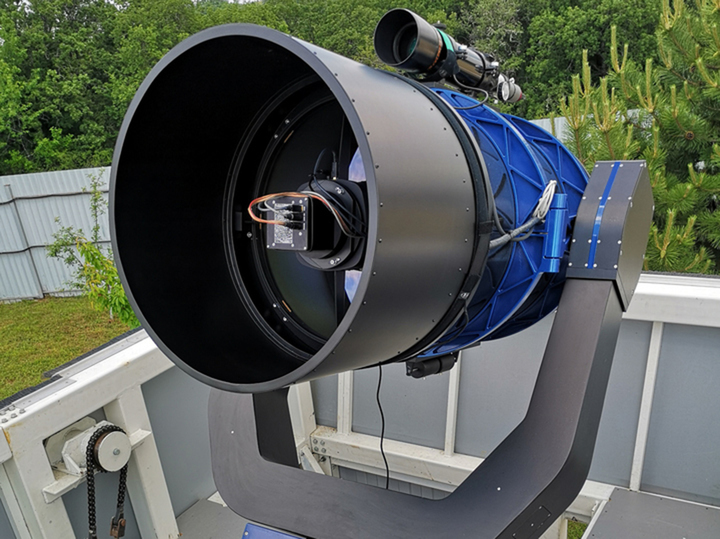Russian astronomer Gennady Borisov discovered an asteroid flying below satellites
[ad_1]
A new asteroid rushed by on March 31 at 19.00 Moscow time, 24-28 thousand kilometers above the Earth, inside the operating zone of geostationary satellites. A few hours earlier, at 4.30 am, it was discovered by Russian astronomer Gennady Borisov, who works at the Crimean Observatory. We phoned the discoverer while hot on the trail.
Help “MK”. Gennady Borisov, a graduate of the physics department of Moscow State University, works in the Crimean branch of the Astronomical Scientific Center and part-time as an engineer at the State Astronomical Institute of Moscow State University (Sternberg State Astronomical Institute of Lomonosov Moscow State University). In his free time, he makes his own telescopes, through which he observes and searches for comets and asteroids. In 2014, he was twice awarded the Edgar Wilson Award, an international prize in astronomy given annually to comet discoverers.
“Yes, I discovered this asteroid at about 4.30 am, and the minimum altitude of passage from the Earth was recorded at 19 o’clock Moscow time,” the discoverer confirmed the information. – The asteroid turned out to be small, 3-4 meters in diameter. Its distinctive feature was that it flew very close to the Earth – at a distance of 24 to 28 thousand kilometers. This is lower than the altitude at which our geostationary satellites operate (their orbit is located at an altitude of 36 thousand kilometers).
– Could it have collided with a geostationary satellite?
– Hardly. A high density of satellites in orbit is a rather relative concept. It’s like taking 500 people and releasing them individually at different points in the Pacific Ocean. The likelihood that two of them will meet somewhere is very low. Moreover, the small size of the asteroid makes this probability even smaller.

-Where did he come to us from?
– Until we have clarified its orbit, no one can say for sure. I can only say that it is near-Earth, most likely from the Aten family, because it has an almost circular orbit, very similar to the earth’s. The period of revolution around the Sun is also close to our earthly year.
– Now, after approaching our planet, it can perform a gravitational maneuver and abruptly change its orbit.
– What telescope did you use to discover it?
Using his homemade 50 cm telescope. In addition to the small size of the “pebble” itself, the situation was complicated by the already quite bright Moon.
– What is the importance of discovering such a nearby asteroid?
– The fact is that people like him, with larger sizes, can be dangerous for earthlings due to a collision. We have shown that we can detect such “gifts” from the sky 15 hours before the closest approach to our planet. The sooner we learn to do this, the less risk there will be a repeat of the type of consequences that occurred from the fall of the Chelyabinsk meteorite, which could not be detected in advance, despite the fact that it was much larger than this.
– Does the world astronomical community already know about your discovery?
– Yes! As soon as I discovered the asteroid, I immediately sent the result to the Minor Planet Center, Harvard (USA). There the robot sees that the object is unique and immediately puts the information on the page for everyone who wants to confirm it at other observatories. Many people immediately joined the observations and observed my nova asteroid.
Has he already been given a name?
No, for now it has a preliminary number, which I gave it myself: GB00686. In a couple of days, a publication circular will be released, where he will be given an official name.
– When will he fly past us next time?
In a year. But it is unlikely that it will be possible to find it again – after all, finding it now is a great success.
– If an asteroid fell to Earth, could you accurately calculate its trajectory and place of impact?
Certainly. Such asteroids are called impactors. Now there are several cases when, after discovering a flying fireball (large meteor), scientists named the place of its possible fall, and search groups of amateurs found fresh burnt fragments there.
[ad_2]
Source link








